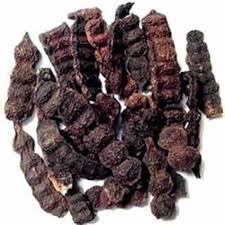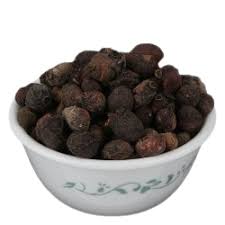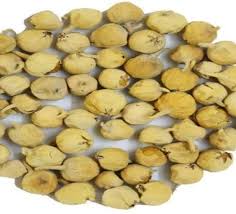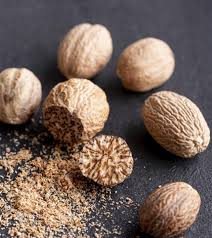Common Mistakes When Using Paneer Phool and How to Avoid Them
Paneer Phool, also known as Paneer Dodi or Withania coagulans, has gained immense popularity in natural wellness circles for its ability to regulate blood sugar, support liver detox, and aid digestive health. As more people turn to Ayurveda and herbal remedies for holistic healing, Paneer Phool is often recommended for those managing type 2 diabetes, digestive imbalances, and seasonal detox routines.
However, while this herb is undoubtedly powerful, many users—especially beginners—make common mistakes when preparing, consuming, or combining Paneer Phool with other remedies. These mistakes can not only reduce its effectiveness but may also lead to unexpected side effects or poor results.
At Dirghaanshi, our goal is to help you make the most of traditional remedies without confusion or misuse. In this guide, we’ll highlight the most common mistakes people make when using Paneer Phool and show you exactly how to avoid them, based on Ayurvedic principles and safe practices.
Long Description
What Is Paneer Phool and Why Is It Used?
Botanical name: Withania coagulans
Common names: Paneer Phool, Paneer Dodi, Indian Rennet
Parts used: Dried flower buds
Primary actions:
Antidiabetic
Hepato-protective
Anti-inflammatory
Digestive tonic
Paneer Phool has been used in Ayurvedic and folk medicine for managing blood sugar levels, improving liver function, reducing inflammation, and supporting overall detoxification. Its bitter and cooling nature makes it suitable for Pitta and Kapha disorders.
Common Mistakes When Using Paneer Phool and How to Avoid Them
- Using Low-Quality or Adulterated Paneer Phool
Mistake:
Buying bulk herbs from unverified sources without checking purity.
Why it’s harmful:
Impure herbs may be mixed with fillers, artificial colors, or moldy particles, reducing effectiveness and possibly harming your health.
How to avoid:
Purchase from trusted Ayurvedic or certified herbal suppliers.
Choose sun-dried, clean, and properly packaged Paneer Phool.
Avoid products with artificial fragrances or chemical processing.
- Inconsistent Dosage and Timing
Mistake:
Taking Paneer Phool irregularly or in incorrect quantities.
Why it’s harmful:
Herbal remedies work best when used consistently. Overdosing can lead to nausea or low blood sugar; underdosing may have no effect.
How to avoid:
Follow a consistent daily routine—preferably in the morning on an empty stomach.
Standard dose: 7–10 buds soaked overnight, drink the water in the morning.
If using powder: ½ tsp once or twice a day with warm water.
- Not Monitoring Blood Sugar Levels
Mistake:
Using Paneer Phool for diabetes without tracking sugar levels, especially when on medication.
Why it’s harmful:
The herb lowers blood sugar. Combined with medication, it can cause hypoglycemia (low blood sugar) if not monitored.
How to avoid:
Check your blood sugar regularly.
Adjust dosage in consultation with your Ayurvedic doctor or physician.
Avoid combining it with other strong antidiabetic herbs without supervision.
- Combining Too Many Herbs Without Knowledge
Mistake:
Mixing Paneer Phool with multiple herbs like Jamun, Neem, Amla, Methi without knowing interactions.
Why it’s harmful:
Over-combination may weaken digestion or increase detox load on the body, especially for beginners.
How to avoid:
Start with single-herb therapy using Paneer Phool alone.
Introduce other herbs gradually under expert guidance.
Keep a daily log of how your body responds.
- Skipping Lifestyle and Diet Modifications
Mistake:
Expecting Paneer Phool to fix issues without changing diet, exercise, or routine.
Why it’s harmful:
Herbs like Paneer Phool are supportive, not magical. Poor lifestyle can cancel out their benefits.
How to avoid:
Follow a low-sugar, high-fiber diet.
Practice regular walking or yoga.
Get adequate sleep and reduce screen time.
Paneer Phool works best as part of a complete Ayurvedic lifestyle.
- Taking During Pregnancy or Without Medical Advice
Mistake:
Using Paneer Phool during sensitive stages like pregnancy or while breastfeeding.
Why it’s harmful:
It may stimulate internal cleansing that is not recommended during pregnancy.
How to avoid:
Avoid during pregnancy and lactation unless prescribed by an expert.
If on other medications (BP, thyroid, etc.), always consult a doctor first.
- Improper Preparation Method
Mistake:
Not soaking the buds properly or using metal containers.
Why it’s harmful:
Improper extraction reduces potency; metal containers may react with herbs.
How to avoid:
Use glass or clay containers for soaking.
Soak 7–10 buds in a glass of water overnight.
In the morning, mash lightly and strain.
Avoid boiling Paneer Phool unless part of a supervised decoction blend.
- Not Giving It Enough Time to Work
Mistake:
Expecting results in 1–2 days and giving up quickly.
Why it’s harmful:
Herbal medicine works slowly but deeply. Impatience may prevent full healing.
How to avoid:
Use for at least 4–6 weeks to see real effects.
Track energy, digestion, and sugar levels weekly.
Maintain realistic expectations based on your health condition.
- Using During Illness or Fever Without Guidance
Mistake:
Taking Paneer Phool during flu, fever, or infections without knowing effects.
Why it’s harmful:
It may weaken digestive fire or interact with infection medicines.
How to avoid:
Temporarily pause during acute illnesses unless advised otherwise.
Focus on rest and hydration during fever.
Resume use after 3–5 days of recovery.
Tips for Best Results with Paneer Phool
Use early in the morning to enhance absorption and effectiveness.
Combine with light seasonal diets and detox practices.
Drink plenty of warm water throughout the day.
Avoid cold, oily, or excessively sweet foods during use.
Use in sync with dosha and season (Kapha/Pitta months are ideal).
Who Can Benefit Most from Paneer Phool?
Type 2 diabetics (with supervision)
People with fatty liver or sluggish digestion
Individuals seeking seasonal detox
Those with mild inflammatory or skin issues
Anyone starting their journey into Ayurvedic herbs
Who Should Be Cautious?
Pregnant or breastfeeding women
Children under 12 years
People with chronic low blood pressure
Individuals on insulin or high-dose diabetic medication
Those with known allergies to the Solanaceae family
Dirghaanshi’s Recommendation
At Dirghaanshi, we believe in the power of Ayurvedic wisdom and safe herbal practices. Paneer Phool is an incredibly effective herb, but like all natural remedies, it must be used with respect, awareness, and proper guidance.
We always recommend:
Choosing high-quality, organic, and ethically harvested herbs
Consulting with qualified Ayurvedic practitioners
Following safe, personalized protocols
Staying consistent and patient in your wellness journey
Let herbs work in harmony with your body—not against it.
Conclusion
Paneer Phool is a valuable herb in the Ayurvedic wellness toolbox. But like any powerful remedy, its benefits depend on how you use it. From sourcing the right quality to following correct dosage and preparation, avoiding these common mistakes can make all the difference in your healing experience.
By understanding what to do—and what not to do—you can maximize the herb’s impact, avoid setbacks, and build a more successful and balanced natural health routine.
At Dirghaanshi, we are here to guide you with accurate, experience-backed information so you can walk confidently on your Ayurvedic journey.












